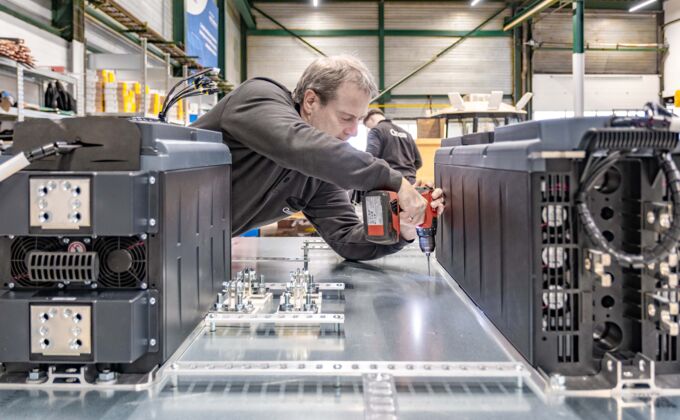
Building a dedicated subsea cable repair ship.
C-Systems – solutions for maintaining critical subsea cable infrastructure
January 2025
C-Systems is working on the systems integration of a very important type of ship: a cable repair vessel. Bachmann electronic is providing the solutions needed for the onboard automation, energy monitoring and control of power generation systems.
At the end of 2024, C-Systems was contracted by Dutch shipbuilders Neptune to deliver the systems integration for a new 99-metre long cable repair vessel. Construction of the ship has already started, with the delivery date expected to be in 2026.
We will be following this project as it progresses: meeting the people involved, learning more about how a cable repair ship is built, about the innovative solutions C-Systems and its client have come up with. And how Bachmann is supporting the process.
What’s so special about a cable repair vessel?
It’s not an exaggeration to say that subsea cables play an integral role in the smooth functioning of modern society. In fact, it’s fair to say that, without subsea cables, life as we know it would not exist.
That’s because pretty much every aspect of our lives is made possible by subsea cables: from global trade and e-commerce to video calls and online gaming. Did you know that 99% of global telecommunications and data transmission is carried by subsea cables? Subsea telecommunications and data transmission cables support global connectivity.
Subsea cables are crucial in international energy distribution too. Besides enabling cross-border energy trading (enhancing energy security) and providing island communities with a reliable power supply, they are also helping the world ‘go green’. As society makes the transition to sustainable and renewable energy sources, subsea cables connect offshore wind farms to mainland electricity grids.
But things can – and do – go wrong
Subsea cables are vulnerable to damage; fishing activities, ship anchors or earthquakes can break them. What’s more, due to escalating geopolitical tensions, subsea cables are becoming more and more susceptible to sabotage. The Baltic Sea in particular has seen numerous suspected attacks recently. These include the failure of an undersea power cable between Finland and Estonia in December 2024, and the cutting of two telecoms cables linking Sweden and Denmark in November 2024.
Protecting subsea cable infrastructure is critical for maintaining global stability. In the event of damage or breakage, it is imperative to repair the cable in question as soon as possible. This is the purpose of Neptune’s new cable repair vessel, which will be vital in maintaining the uninterrupted flow of data and electricity around the world.
Solutions from C-Systems
C-Systems is integrating various solutions to ensure that the new fast response cable repair vessel can do its job of: Locating the Fault – Retrieving the Cable – Splicing and Repairing the Cable – Re-laying the Cable.
- Dynamic Positioning: keeping the ship in the same position in rough seas and deep waters.
When handling very expensive subsea cables, it is important that the new repair ship maintains its position. And don’t forget that conditions at sea can change very quickly: tides, currents, wind and waves can make working at sea very challenging. The solution is Dynamic Positioning (DP): this is an automated system that will use the ship’s own thrusters to maintain its position even when the going gets tough.
“This ship’s DP system will ensure that the ship stays operational in rougher conditions. And the longer you can keep the ship operational, the more interesting it is for the end-client, whether that is an energy or telecoms supplier,” says C-Systems Project Manager Jeroen Nobel. “So it’s not only about reducing the ship’s downtime; it’s also about increasing the operational window.”
DP systems are categorised in terms of their redundancy. DP1 is the most simple: the ship can keep its position automatically. DP2 is more advanced: the ship can hold its position if one active component fails. DP3 is the most complex: the ship maintains position with the failure of an active or static component and even in the event of fire or flooding.
“This new cable repair ship will have a DP2 system. So it will hold its position if, for example, if one generator or thruster fails,” explains Jeroen. “This requirement has an enormous impact on the design choices that we have made throughout the rest of the ship: power management, cooling etc. All systems are ‘doubled up’ to achieve this level of redundancy. We have done everything to increase the capabilities of this ship.”



